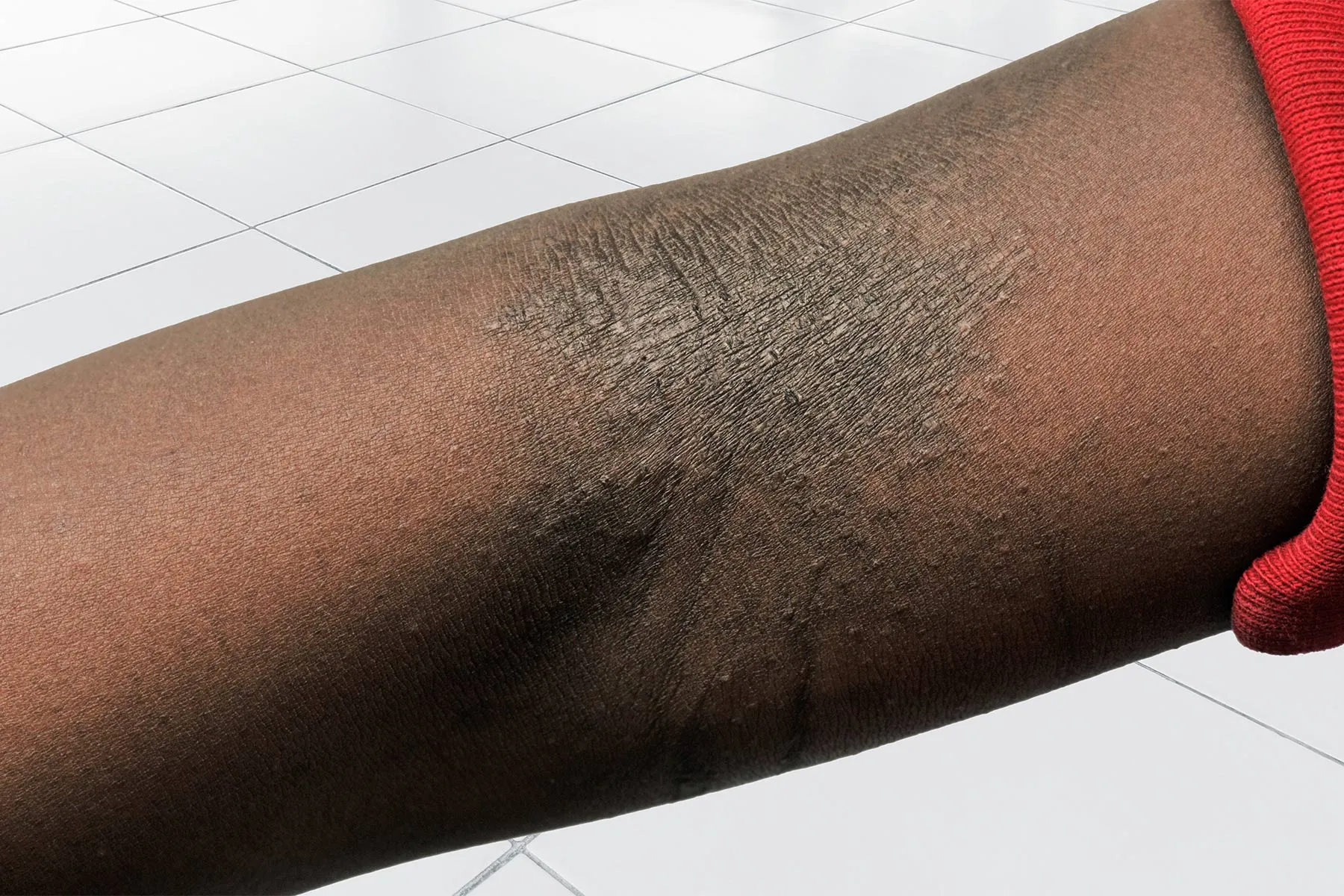Children and Guns: Holding Parents Accountable
The charges filed against James and Jennifer Crumbley, parents of a Michigan teen who allegedly shot dead four of his high school classmates, could bring greater national attention to weaknesses in federal and state laws regulating firearm storage and minors’ access to guns, a TCR Special Report found.


James and Jennifer Crumbley, via CNN
After reviewing the timeline of events in the days before Ethan Crumbley, a 15-year-old sophomore, allegedly opened fire on his classmates at Oxford High School, 45 miles northwest of Detroit, prosecutors said that they had to send a message.
Three days after the Nov. 30 shooting, which left four students dead and seven others injured, the Oakland County Prosecutor’s Office filed criminal charges against Crumbley’s parents, James and Jennifer Crumbley, who purchased the firearm at a local gun shop on Black Friday as an early Christmas present for their son.
Prosecutors said the parents stored the gun unlocked in their bedroom drawer after a trip to a shooting range that weekend.
With firearm owners rarely held accountable when a lost or stolen weapon is used in a homicide, suicide or an unintentional shooting, these charges could bring greater national attention to what proponents of gun violence prevention have long said are weaknesses in existing federal and state gun storage legislation.
“We don’t have strong enough laws,” Oakland County Prosecutor Karen McDonald told reporters at a Dec. 3 press conference announcing charges of four counts of involuntary manslaughter for both parents, with each now held on bonds of $500,000.
“You’re not legally required to store your weapon in a safe manner.”
Even as a 2005 law requires gun dealers to sell a firearm with a safety device in place, federal law has yet to resolve the question of who should be held accountable when someone who legally isn’t allowed to possess a firearm gains access to one and, as result, someone is injured or killed.
That law doesn’t require the gun purchaser to use the safety device sold with their firearm. And, there are no federal laws mandating gun storage practices after the owner takes position of a legally purchased firearm.
But by means of child access prevention (CAP) laws, which impose liability on firearm owners when a child gains access to a gun, some states regulate household storage and thereby who might be held responsible when a weapon falls into the hands of a minor.
But the effectiveness of such policies is unclear.
Child Access Prevention Laws in 29 States
While CAP laws have been enacted in 29 states and the District of Columbia, the trigger for liability varies from state to state. In California, Colorado and Massachusetts, a firearm owner can face liability after leaving a gun where a child merely has the potential to gain access.
Georgia, Kentucky and Tennessee are among states where “reckless provision” of a firearm to a minor can lead to criminal charges. The definition of a “child” ranges among states from age 14 and 18.
In most states, violating the CAP law is a misdemeanor.
“That’s nothing,” Leesa Ross, founder of Texas-based Lock Arms for Life, told The Crime Report. “A misdemeanor is a slap on the wrist. Do we take this law from a misdemeanor charge to a felony charge?
“That’s much more than a slap on the wrist. That may be what it takes.”
Michigan, where 35 percent of households own a firearm, doesn’t have a child access prevention law on its books. The felony charges filed against the Crumbleys could result in a maximum prison sentence of 15 years on each count of involuntary manslaughter.
State laws that prohibit local firearm regulations have thwarted some efforts to legislate firearm storage practices. But in recent years some cities have been able to enact policies without violating state preemption.
In Washington state, despite a law that prohibits municipalities from enacting legislation that regulates firearms, the city of Seattle in 2018 enacted and in 2019 defended a policy that imposes a fine of up to $500 on gun owners who don’t store their weapons in a locked container.
Fines increase to a maximum of $1,000 if a minor gets hold of the firearm and up to $10,000 if the gun is used in a crime or leads to injury or death.

Seattle City Council President Lorena Gonzalez
The policy, says Seattle City Council President Lorena González, was prompted by findings that two-thirds of gun owners in King County weren’t storing their weapons properly.
“A gun safe storage law is a key way to promote responsible gun ownership [and] also to keep guns out of the hands of people who might use them to either harm themselves or harm others,” González said in remarks at an August 2021 panel discussion convened by the John Jay College Center on Media, Crime & Justice.
Despite success in her city, González says local governments still may need federal policy to enact gun storage regulations.
“I need Congress to hear the cries and the sorrows of the mothers who are losing their children to forms of gun violence every day in our community,” González said.
“The number one way for Congress to deal with that is to have the courage to take on the gun lobby and prevent the free flow of firearms that are not necessary into our communities,” Gonzalez said.
With the increase in gun sales that coincided with the COVID-19 outbreak, communities may have more firearms within their midst.
Citing U.S. Homeland Security Guidelines on critical infrastructure workers, several states designated gun retailers as “essential” businesses at the onset of pandemic lockdowns in March 2020.
In the months since, the FBI has logged record numbers of requests for background checks from which experts estimate sales of 22 million guns in 2020 — a 64 percent increase over 2019. Between mid March and mid July 2020, 6.4 million people bought guns for the first time.
The spike in gun purchases has continued into 2021. With these recent sales, more than five million minors live in homes with at least one unloaded, unlocked firearm, according to data compiled by Harvard researchers in a 2021 national firearms survey.
“There are so many more first-time gun owners who may not have the training and knowledge about secure storage,” Melissa Osborne, a Georgia State University epidemiologist and gun violence researcher told The Crime Report.
“This has always been a concern, but now children are spending more time at home and many young people are also experiencing worse mental health than usual.”
Crumbley’s Parents Met With School
Crumbley allegedy fired upon classmates hours after counselors met with his parents to tell them about images of a handgun and a bloody figure that the teen allegedly had drawn, according to a letter Oxford High School superintendent Tim Throne posted online.
On Nov. 29, school counselors contacted Crumbley’s parents after they found him searching online for ammunition, according to Throne.
The teenager has been charged with terrorism, and four counts of first-degree murder in connection with the deaths of Madisyn Baldwin, 17; Tate Myre, 16; Hana St. Juliana, 14; and Justin Shilling, 17. Six other students and an instructor are recovering.
For these injuries, Crumbley also is charged with seven counts of assault with intent to murder and 12 counts of possession of a firearm during the commission of a felony.
At the news conference, McDonald said that the parents’ failure to tell school counselors that they had purchased a gun for their son was among factors that led to her decision to pursue charges against them.
Shannon Smith and Mariell Lehman, defense attorneys for the parents, said in a Dec. 3 statement that the prosecutor’s office has “cherry-picked and slanted specific facts,” and reportedly have disputed the claim that the Crumbley’s stored the firearm unlocked.
[In related news, Judge Julie Nicholson on Tuesday granted a request by prosecutors and defense lawyers to postpone until Feb. 8 a key hearing that will determine whether the parents will face a trial, reports the Los Angeles Times.]
Have Firearm Prevention Policies Changed Behavior?
How often firearm owners are charged or convicted under child access prevention policies in episodes of gun violence, whether they be homicides, suicides or unintentional shootings, or the extent to which these policies have resulted in a change in firearm storage behavior among gun owners, isn’t clear.
A Washington Post investigation of 145 school shootings between 1999 and 2018, revealed that four adults were convicted for not locking up the firearms used in the shootings.
Among the cases, the paper the found harshest penalty was a 29-month sentence for Jamelle James, a Michigan gun owner who stored a handgun in a shoebox. In February 2000, his six-year-old nephew found the gun, took it to school and fatally shot classmate Kayla Renee Rolland.
Among hundreds of cases of firearm shootings involving children and teens inadvertently gaining access to a firearm that the nonprofit advocacy Everytown group’s Research & Policy section logged in over the past six years, many involve situations of minors gaining access to firearms after finding them in closets and night stand drawers, inside purses and backpacks or just left out in the open.
In these cases, it hasn’t always been clear to prosecutors how to pursue accountability.
Even as Florida’s child access prevention law is triggered when a firearm owner leaves a loaded weapon in the reach of a minor under age 16, prosecutors didn’t charge Tampa Police officer Edwin Perez, owner of the 9 mm Sig Sauer P320 that killed 15-year-old James Bradley Hulett II, who was among three teens visiting Perez’s home in December 2019.
After opening a locked bedroom door with a paperclip, Perez’s son and two of the boys gained access to his father’s department-issued firearm, which Perez left stored unlocked with a live round in the chamber in the home he shared with his teen son. Perez received a week’s suspension.
“If you have a case where ten-year-olds are playing and the parents left them alone, but not locked up the gun and the gun went off and one child was killed, who then is responsible?” asked Gretchen Casey, who has served as the director of victim services in Florida’s 8th judicial circuit state attorney’s office, in an interview with The Crime Report.
“Do you hold the ten-year-old responsible? Do you hold the parents of the ten year old?”
Enforcing a child access prevention law becomes even less clear when victim and defendant are in the same household.
“If the family has already experienced death a lot of times prosecutors don’t want to prosecute it,” Ross says.
Even as municipalities and medical groups, such as the American Association of Pediatrics, have advised gun owners to store firearms locked and unloaded with the ammunition stored separately, more than half of all firearm owners have at least one firearm stored unlocked or loaded.
And that trend has continued with the more recent gun purchases.
“Firearms purchased during the pandemic were more likely to go to homes where at least one firearm was stored, loaded and unlocked,” Rebeccah Sokol, a behavioral scientist at Wayne State University School of Social Work told The Crime Report.
In the beginning months of the pandemic, 10 percent of U.S. households with teenagers age 14 to 18 purchased a firearm and 3 percent became first-time firearm owning-households, according to a national survey of 2,924 parents Sokol co-authored along with colleagues at Firearm Safety Among Children and Teens (FACTS), a consortium of gun safety researchers housed at the University of Michigan.
Even as parents think otherwise, about half of teens between the ages of 13 and 17 say that they can get to a family firearm in an hour, said Carmel Salhi, assistant professor in the department of health sciences at Northeastern University, describing findings from a 2019 firearm survey at a recent FACTS conference.
Whether or not their state had a child access prevention law in place made no difference in a teen responding that they could gain access to firearms in their home, Salhi said
Toward greater awareness of firearm storage behavior, the American College of Physicians, the American College of Emergency Physicians, the American Medical Association and the American Academy Pediatrics are among medical groups that explicitly encourage health care providers to take on a greater role in counseling families about the presence of firearms in their home.
But few parents who said they’ve been counseled actually change their firearm storage behavior, says Patrick Carter, a physician, professor of emergency medicine and co-director of the University of Michigan’s Institute for Firearm Injury Prevention.
“There’s pretty good trust between parents and teens and their healthcare provider to talk about general health topics — even controversial topics like vaccines, but when we hit the topic of firearm safety, we see that there’s a much lower level of trust,” Carter said, describing his research at a recent FACTS conference.
Setting a Minimum Age for Gun Possession
Even as the impact of state child access prevention laws is unclear, there has been some consensus that federal and state minimum age laws for gun purchase and possession can prevent minors from gaining access to a gun.
Federal law sets a minimum age for possessing a handgun at 18. There is no minimum age for possession of long gun.
Licensed dealers can’t sell a firearm or ammunition to anyone under age 21. Unlicensed sellers can’t sell to anyone under age 18.
In some states the minimum ages for gun purchase or possession is 21.
In recent years, advocacy groups have called for storage legislation, yet the conversation on firearm storage thus far has centered on educating firearm owners and supplying gun locks — not on new federal policy.

Cassie Chew
But the court proceedings following this latest school shooting may result in more conversation about holding gun owners legally accountable for their firearm storage behavior.
“Four kids were murdered and seven more were injured. We should all be very angry and take a look at what’s in place in terms of criminal responsibility — what are gun owners required to do?” McDonald said.
See also: Gun-Safety Measures Focused on Storage Win Bipartisan Backing, The Crime Report, April 21, 2021
Cassie M. Chew is a 2021 John Jay/Arnold Ventures Justice Reporting Fellow. She has worked as a reporter on Capitol Hill and has written previously for The Crime Report, ABA Journal and Civil Eats. In part two of this Special Report, Chew interviews parents, including gun owners, who are mobilizing for stricter firearm storage laws.

 Landwebs
Landwebs 





















